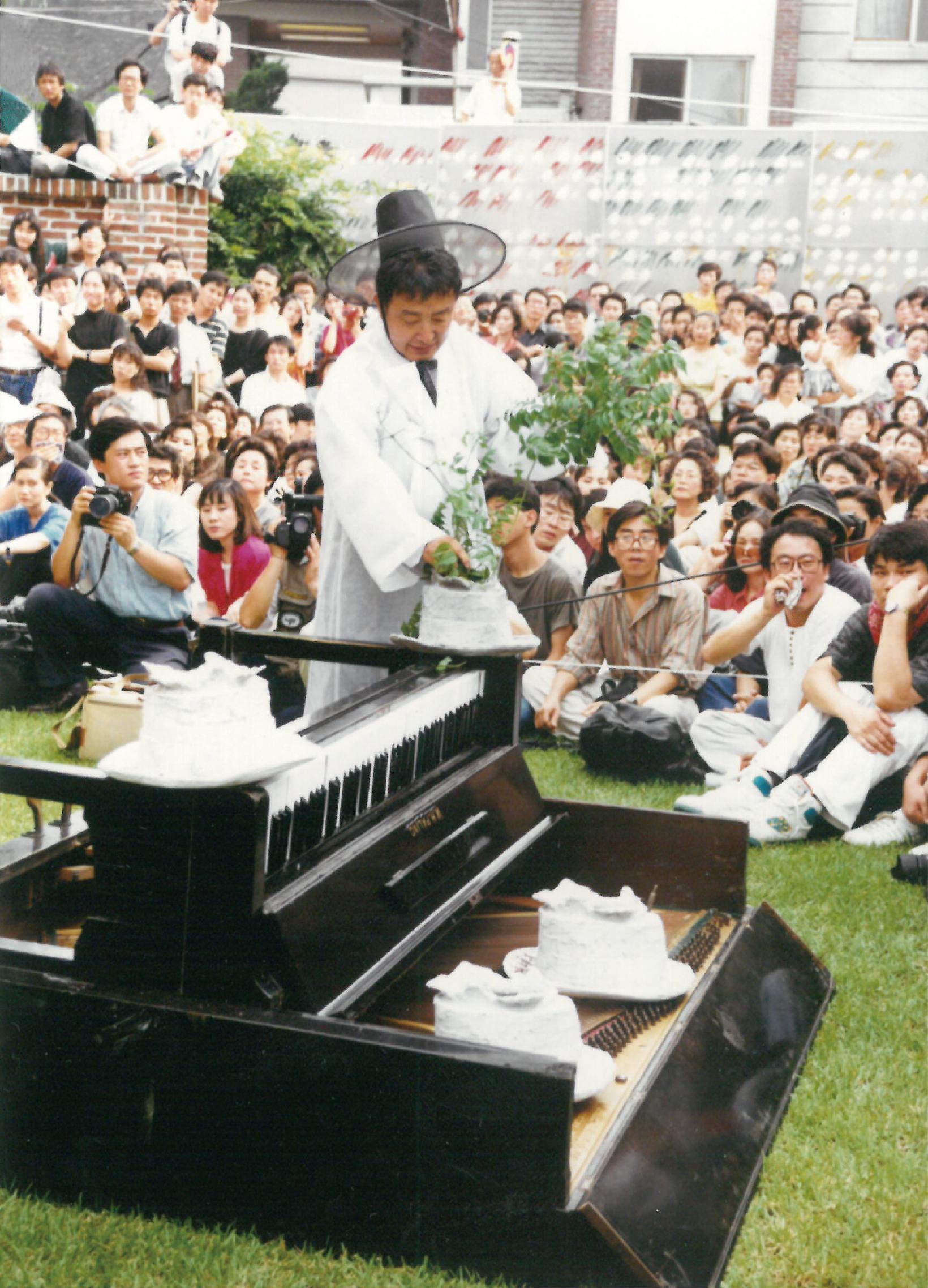Nam June Paik (1932-2006) worked with a variety of media and is widely considered to be the first video artist and “father” of the video art genre. His keenness for music and attempt to eliminate the boundary between music and action as well as body and technology persists throughout his artistic oeuvre. An active participant in the Fluxus movement, Paik was a strong advocate for the fusion of different genres of art and the fusion of art and life that connected religions and continents on a global scale. While his initial work brought the television to the field of fine art by treating the TV as a tactile and multisensory medium and object, his work included video sculptures, installations, performances, TV production, real time satellite broadcasts, videotapes. Oftentimes humorous yet deeply contemplative in nature, Paik’s dialogue revolved around issues of cosmological importance to the façade of everyday reality. The artist’s endeavored to incorporate media as the new medium for art and has consistently challenged the way we perceive time and space. His groundbreaking practice continues to inspire artists in a wide array of genres.
Born in to a wealthy family, Paik moved to Hong Kong and then Japan during the tumult of the Korean War. He graduated from the University of Tokyo in 1956 before moving to Germany to continue his studies in music. Trained as a classical pianist, he came into contact with protagonists of the counterculture and avant-garde movements of the 1960s. In Germany he met and befriended contemporaries such as John Cage and George Maciunas resulting in his participation in the neo-Dada Fluxus group. He immigrated to the US in 1964 and settled in New York where he expanded his practice in the video and television media. His work that began with Japanese engineer Shuya Abe in the late 60s helped to transform the boundaries of the medium in art in essence creating a new artistic medium through the use of their video synthesizer. Paik has been the subject of many renown exhibitions and retrospectives at the Whitney Museum of American Art, the Guggenheim Museum, Documenta, the Venice Biennale and the Whitney Biennial. He taught at the Kunstakademie Dusseldorf from 1979 to 1996. Paik died in 2006. In 2008, the Nam June Paik Art Center opened just south of Seoul.
백남준은 다양한 미디어를 활용하여 작업을 하였으며 비디오아트의 창시자로 널리 알려져 있다. 그의 작품에서 우리는 음악에 대한 섬세한 감각과, 신체와 기술 사이의 경계뿐만 아니라 음악과 행위 사이의 경계를 없애고자 했음을 감지할 수 있다. 그리고 이러한 활동들이 그를 플럭서스의 가장 주요한 작가로서 자리매김하게 했음 또한 분명하다. 그는 예술의 여러 장르들을 거침없이 융합하였고, 더 나아가 종교와 대륙을 넘어서는 전지구적인 규모에서의 예술과 삶의 일치를 꿈꾸었다. 그가 남긴 유머러스하지만 동시에 깊은 통찰력을 드러내는 문장들은 일상의 진실들을 마주하는 우주론적 담론 주변을 맴돈다. 미디어라는 새로운 매체를 미술 안으로 끌어들이고자 했던 백남준의 노력들은 우리가 시간과 공간을 인식하는 방법에 지속적인 의문을 제시했고, 그랬기에 그러한 노력들은 지금까지도 다른 미디어 아티스트를 위한 영감의 원천이 될 수 있었다.
